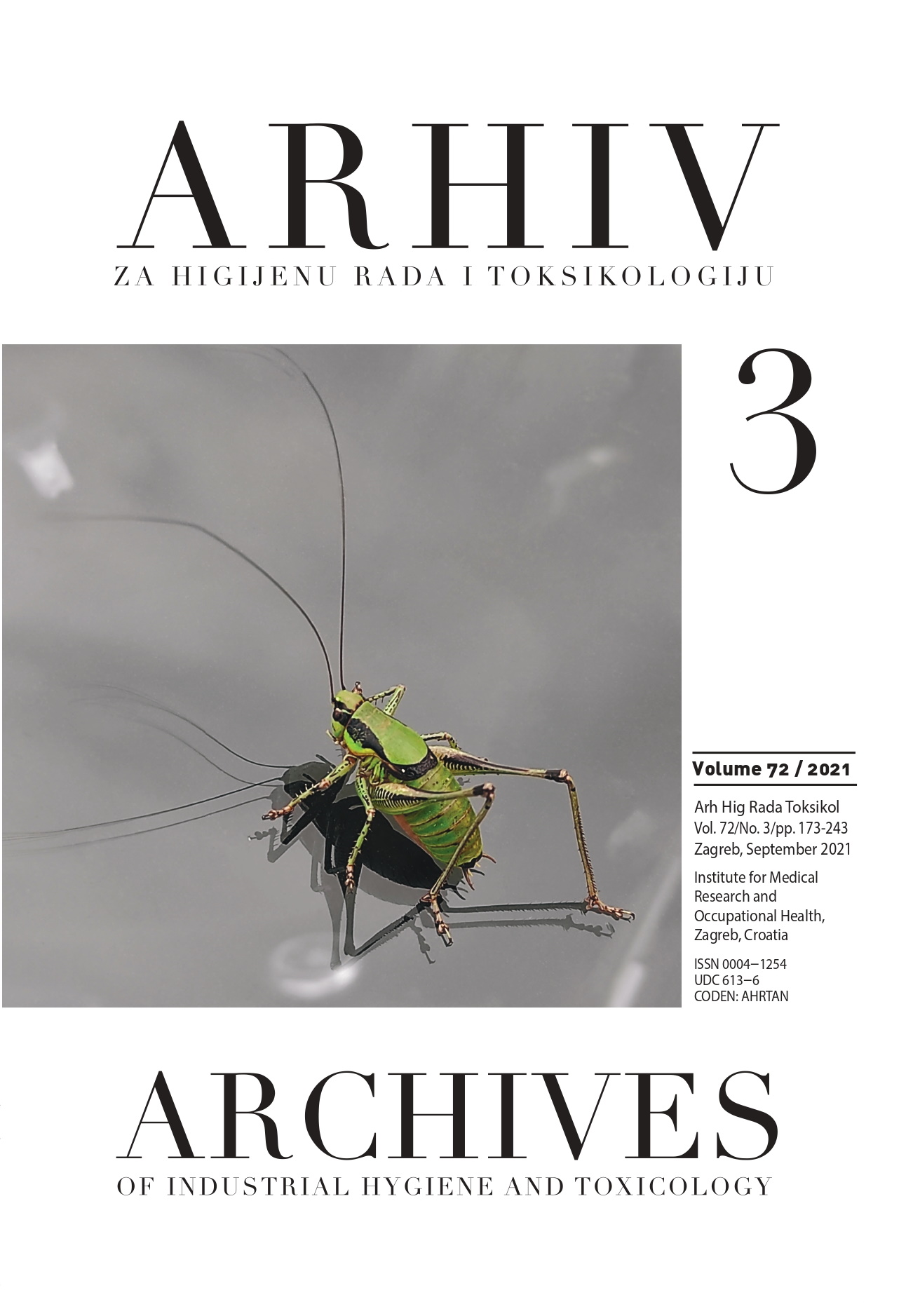Work from home and musculoskeletal pain in telecommunications workers during COVID-19 pandemic: a pilot study
DOI:
https://doi.org/10.2478/aiht-2021-72-3559Keywords:
back pain, ergonomics, gender, hand pain, neck pain, physical activity, work space, work with computersAbstract
One of the side-effects of the COVID-19 pandemic is a global change in work ergonomic patterns as millions of people replaced their usual work environment with home to limit the spread of the severe acute respiratory syndrome coronavirus 2 (SARS-COV-2) infection. The aim of our cross-sectional pilot study was to identify musculoskeletal pain that may have resulted from this change and included 232 telecommunications company workers of both genders [121 (52.2 %) men aged 23–62 (median 41; interquartile range 33–46 yrs.) and 111 (47.8 %) women aged 23–53 (median 40; interquartile range 33–44)] who had been working from home for eight months (from 16 March to 4 December 2020) before they joined the study. The participants were asked to fill in our web-based questionnaire by self-assessing their experience of hand, lower back, and upper back/neck pain while working at home and by describing their work setting and physical activity. Compared to previous work at the office, 90 (39.1 %) participants reported stronger pain in the lower back, 105 (45.7 %) in the upper back/neck, and 63 (27.2 %) in their hands. Only one third did not report any musculoskeletal problems related to work from home. Significantly fewer men than women reported hand, lower back, and upper back/neck pain (p=0.033, p=0.001 and p=0.013, respectively). Sixty-nine workers (29.9 %) reported to work in a separate room, 75 (32.4 %) worked in a separate section of a room with other household members, whereas 87 (37.7 %) had no separate work space, 30 of whom most often worked in the dining room. Ninety-five participants (40.9 %) had no office desk to work at, and only 75 (32.3 %) used an ergonomic chair. Of those who shared their household with others (N=164), 116 (70.7 %) complained about constant or occasional disturbances. Over a half of all participants (52 %) said that they worked longer hours from home than at work, predominantly women (p=0.05). Only 69 participants (29.9 %) were taking frequent breaks, predominantly older ones (p=0.006). Our findings clearly point to a need to inform home workers how to make more ergonomic use of non-ergonomic equipment, use breaks, and exercise and to inform employers how to better organise working hours to meet the needs of work from home.














